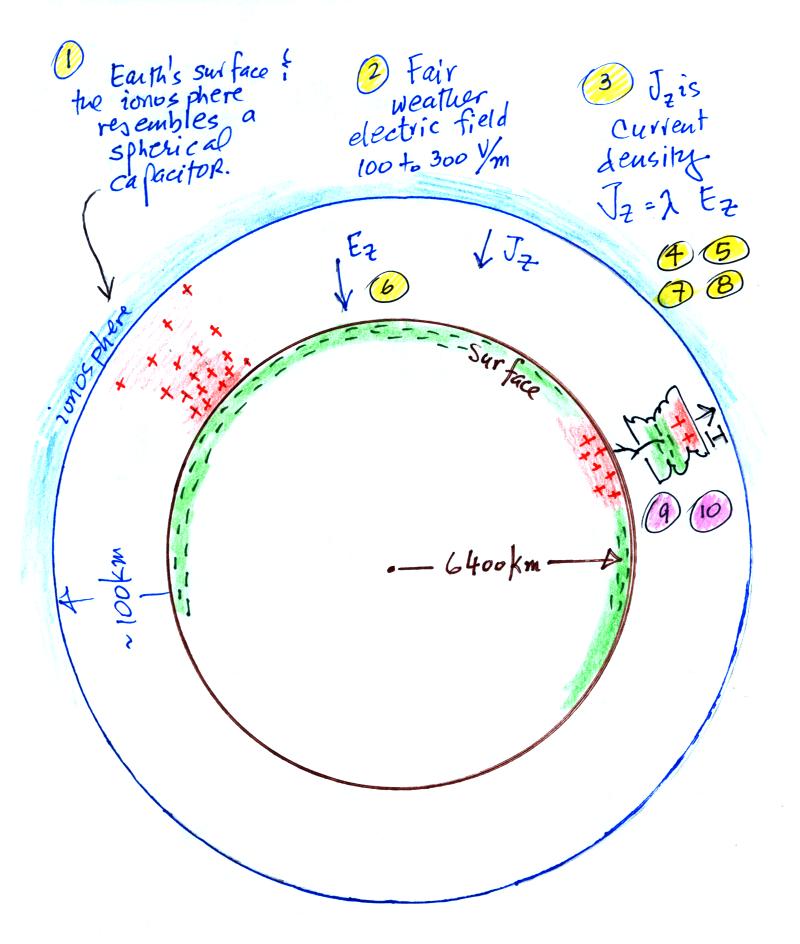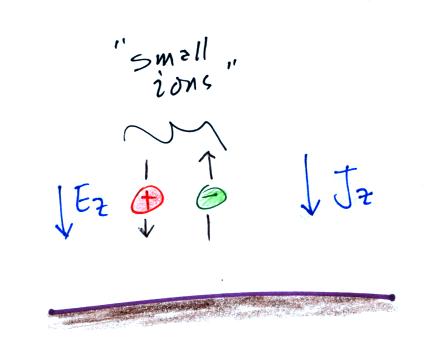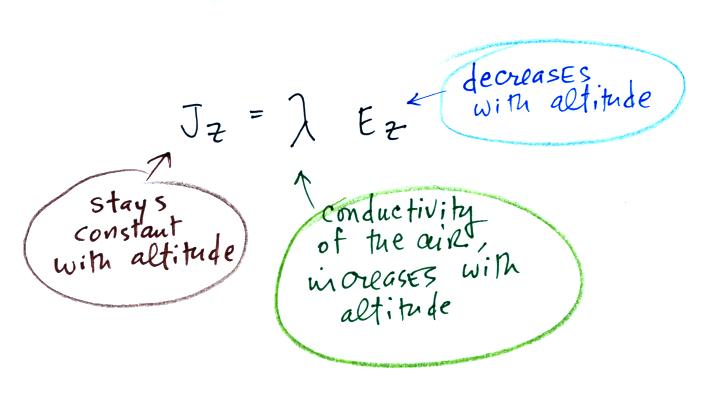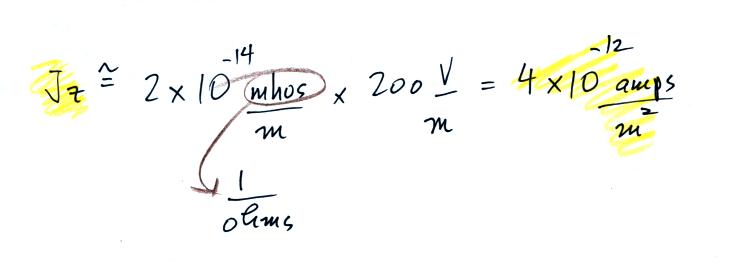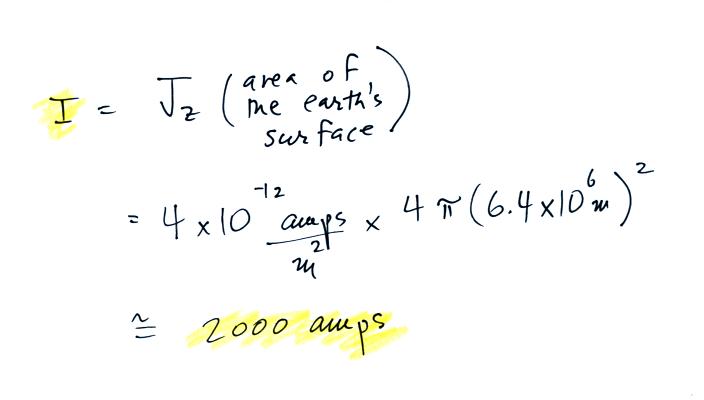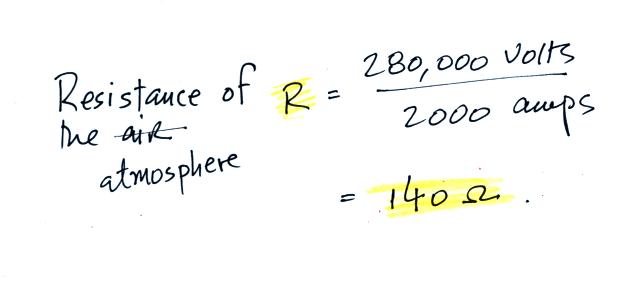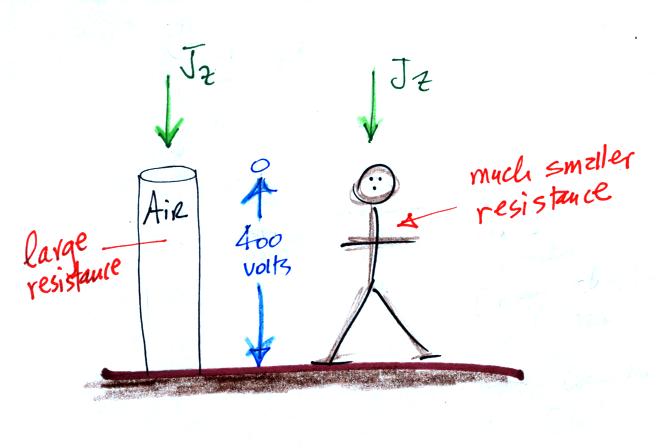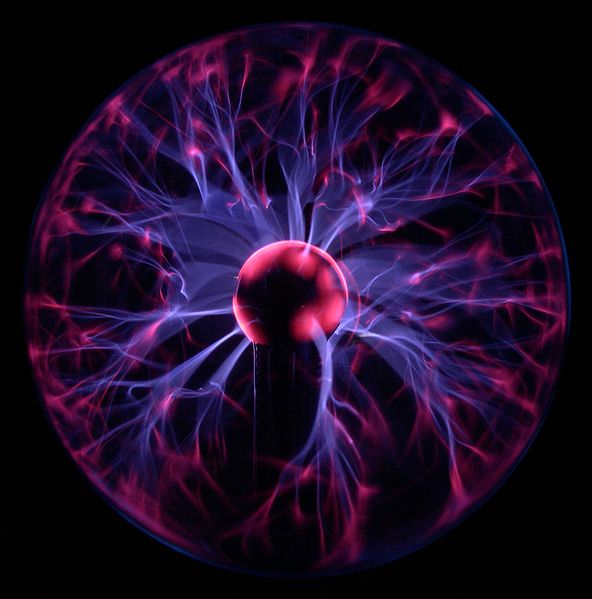We'll find that Ez
decreases, conductivity increases, and current density remains
about constant with increasing altitude (under steady state
conditions).
Point 5 We can assume reasonable values
for the strength of the "fair weather" electric field and the
conductivity of the air to estimate Jz.
We can multiply this current density by the area of the
earth's surface to determine to total current flowing between
the ionosphere and the earth's surface.
Point 7 The
potential of the ionosphere ranges from 150 kV to 600 kV
relative to the earth's surface (see Table 15.1 in The
Earth's Electrical Environment ) We'll use an
average value of 280,000 volts.
We can divide the surface-ionosphere potential difference by
the current flowing between the ionosphere and the surface to
determine an effective resistance of the atmosphere.
Point 6
Let's step backward briefly. An electric field of 200
V/m would mean there would be a 400 volt difference between
the ground and a point 2 meters above the ground.
That's about a 400 volt difference between our head and our
toes when we step outside. Why don't we feel this?
Air has a very low conductivity (high resistance), a very
weak current flowing through air can produce a large
potential difference. The resistance of a human body
is much lower (I don't really know what the resistance of a
human body is, perhaps 1000 ohms up to as much as 100,000
ohms depending on how hydrated the body is). Compared
to air the person is effectively a short circuit and there
really is very little or no head-to-toe potential
difference.
This is about as far as we were
able to go on this first day of class.
The remainder of the material on the global electric circuit
has been moved to the Jan. 16
lecture notes.
The following wasn't mentioned
in class today
We try to include as many basic demonstrations and
examples of working instrumentation used in thunderstorm and
lightning research in this course as we can. They are
entertaining and educational and they also take up time that
otherwise would be spent on lecture.
Along those lines, the flow of electricity between the
ionosphere and the surface of the earth in some respects
(probably very few respects) resembles the visible
discharges in a plasma globe. Some photos are shown
below (source).
You'll find a clear and basic explanation of how
plasma globes work here.
References and optional reading
R.P.
Feynman, R.B. Leighton, M. Sands, "Electricity in the
Atmosphere," chap. 9 in the Feynman Lectures on Physics,
Vol. II, Addison-Wesley Publ. Co., 1964.
E.A.
Bering III, A.A. Few, J.R. Benbrook, "The Global Electric
Circuit", Physics Today, 51, 24-30, 1998.
R.G.
Roble and I. Tzur, "The Global Atmospheric-Electrical
Circuit," chap 15. in The Earth's Electrical Environment,
National Academy Press, Washington, 1986.
E.R.
Williams, "The global electrical circuit: A review,"
Atmospheric Research, 91, 140-152, 2009.
